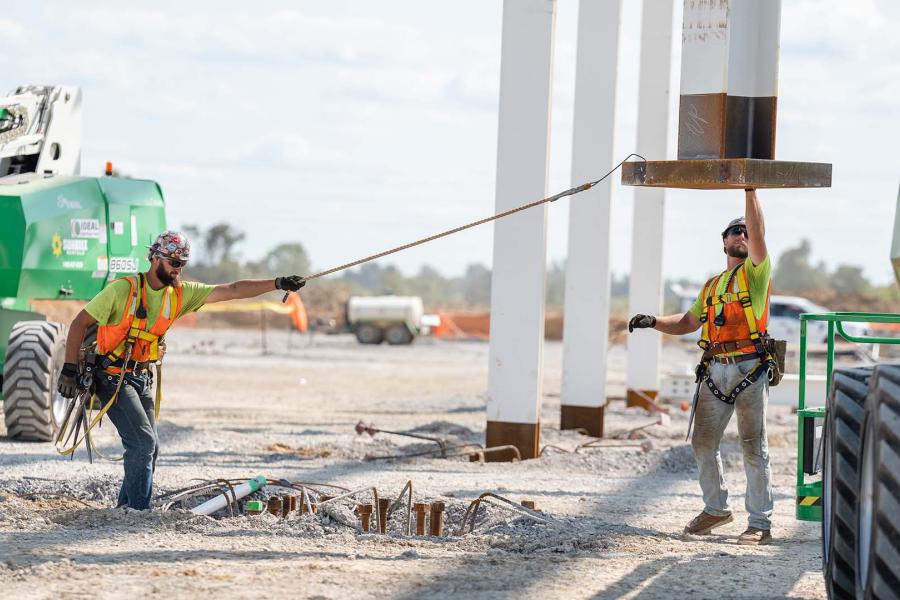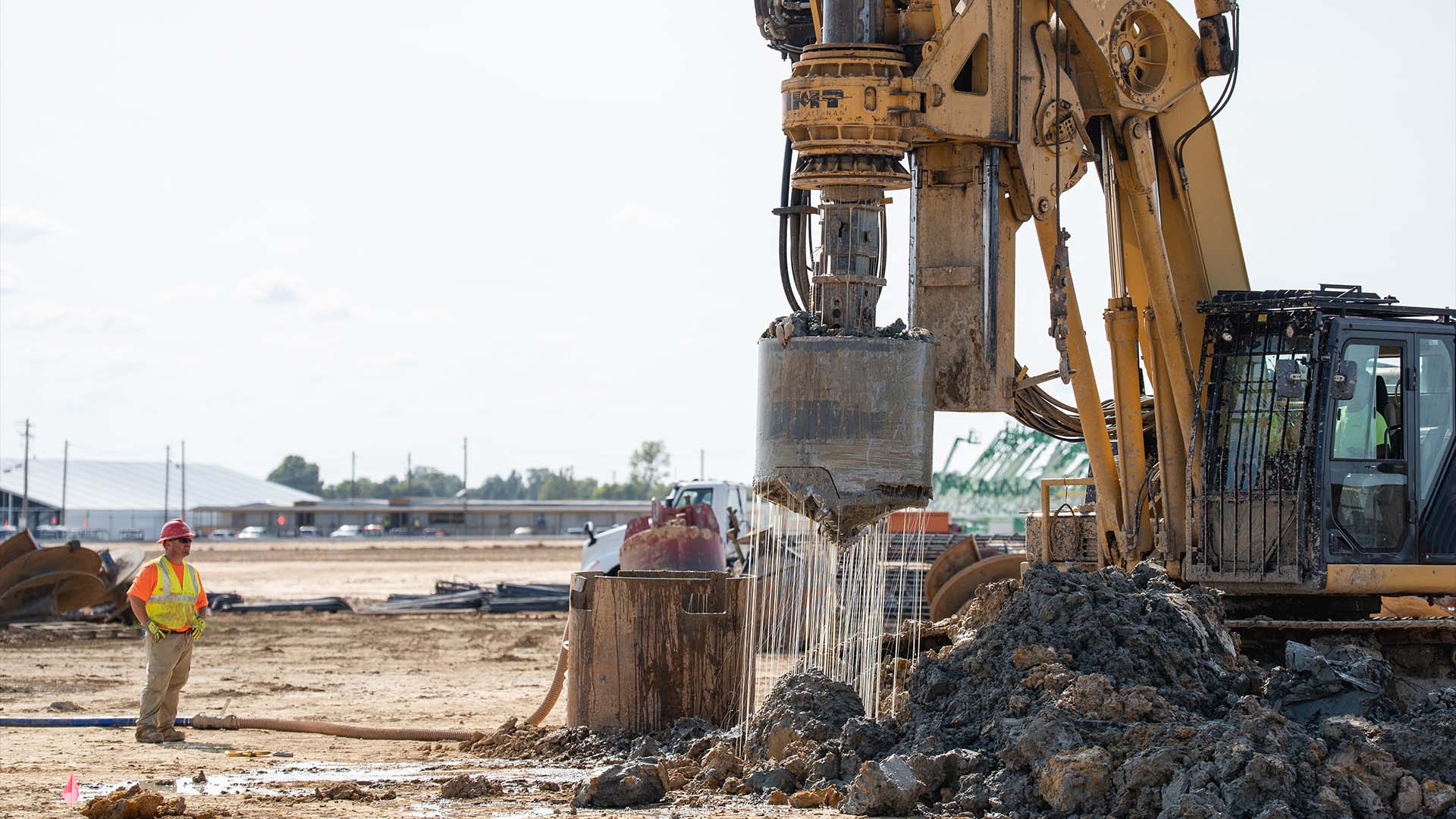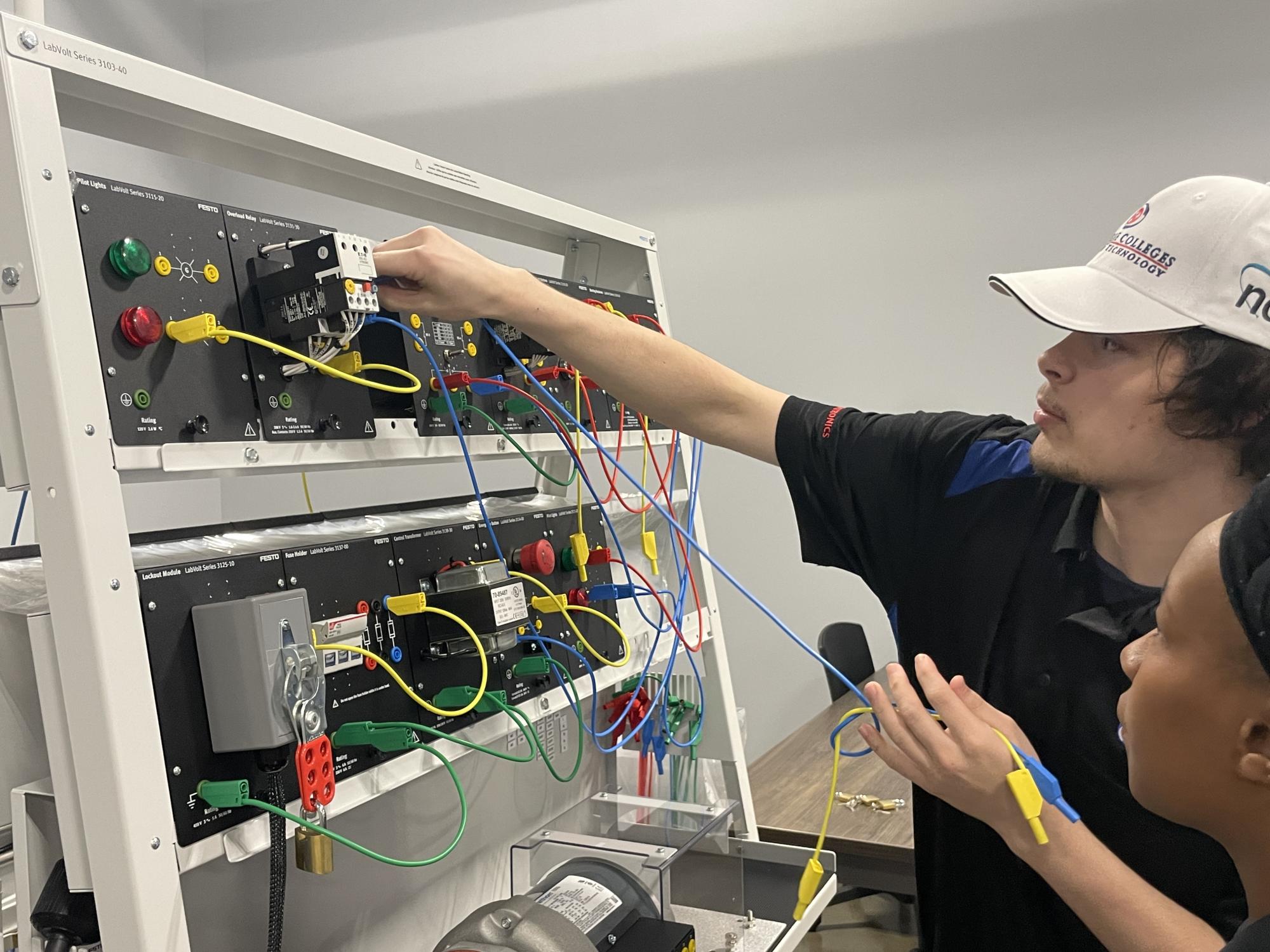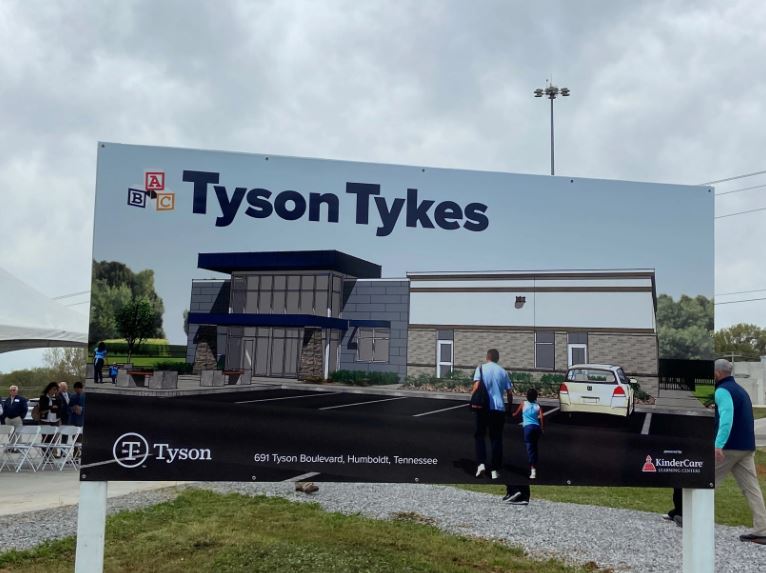Developing workforce essential to Blue Oval progress

By KATE COIL
TML Communications Specialist
As walls start to go up at the Blue Oval City site, how to build the workforce that will be needed by Ford, SK Innovations, and other area suppliers was the topic of conversation among state and local leaders at the most recent Blue Oval City Community Information session.
Representatives of the Tennessee Department of Labor and Workforce Development (TDLWD), Tennessee Board of Regents (TBR), Tennessee Colleges of Applied Technology (TCAT), and Tennessee Department of Human Services (DHS) all spoke on various efforts being undertaken to ensure workforce needs at the site are met.
Officials agreed workforce participation will come from a variety of sectors, ranging from students fresh out of high school or higher education institutions, those currently not actively participating in the workforce, and those looking for new careers. Providing education for upcoming members of the workforce as well as ensuring that childcare is place to help labor force participation are two other key goals.
LABOR FORCE PARICIPATION
Kristie Bennett, lead regional director for West Tennessee with TDLWD, said the top concern for workforce development in the region is labor force participation.

“We do have labor force participation pilot projects that are going on,” she said. “I would highly suggest that mayors get with workforce board directors and regional workforce director and schedule time for us to get together at a roundtable and talk about the challenges in your county, because that varies. We are looking at all the roadblocks and barriers and how we can address those.”
In addition to reaching out to regional directors with TDLWD, Bennett said leaders in counties without a workforce board may consider creating one for their county or community. TDLWD has resources to help establish these boards as well.
“If you don’t have a workforce board or a team that works on workforce issues in your area, we definitely have a good model that I could share with you,” she said. “Gibson County has one that has been going for quite some years. That would be a recommendation I would like to make.”
TDLWD is presently running a labor force participation pilot program across the state, and Bennett said there is plenty of data available that can help communities identify what gaps they need to fill in.
“This is a key data tool that we can use, and it will identify who is in the workforce, who had not returned to the workforce, challenges like commute patterns, and things like that,” Bennett said. “There are a lot of resources out there with that dashboard. We also have labor market information and data we can pull at the state. We also rely heavily on our chambers with their census data on their area profiles. I think there are a lot of tools out there; it’s just a matter of reaching those. If you feel you’ve hit a block, feel free to reach out to your executive director at the board or your regional director. We will make sure we get you navigated to the right tool to address the needs we have.”
One major resource at the American Job Centers are one-stop centers that provide wrap-around services ranging from training and education to finding jobs. Bennett said the job centers are the “first line of defense” for workforce participation.
Suzanne Carr, DHS director of operations, said her department also works closely with the job centers to help provide resources to those looking to get back into the labor force.
“We work really heavily with the American Job Centers with the Department of Labor,” Carr said. “A lot of our other programming, like our SNAP and TANF, have customers that work with the AJCs. They really help us with getting people work ready.”
EDUCATION
Heath McMillian, executive vice president of the Blue Oval TCAT and interim president of TCAT Jackson, said understanding the occupations in a community and the educational pathways needed to take to get to those occupations is one way local leaders can help direct the workforce into the positions that will be available.

“As the mayors and community leaders are being cheerleaders, I think understanding those occupations is one of the most important things to guiding folks into those pathways,” McMillian said. “We don’t have everything defined currently, but as you can imagine it’s going to be highly automated and technical. A lot of those occupations across the board are going to include the competencies you are required for any mechatronics programs which includes fluid power, pneumatics, and AC and DC theory. I think as you look at many of our institutions across the way in West Tennessee, we are already providing those. There is also robotics in your automation piece, sensors, and vision systems. Those are some of the things we are working on.”
McMillian said they are also looking at electrician apprenticeship programs, mechanical repair programs, tool and die, and a multi-crafted maintenance technician program that are all still in development. While these programs being currently offered aren’t tailored specifically to Ford’s needs, McMillian said Ford is willing to help upscale and train employees who already have some of these qualifications to meet their specific needs.
TCAT has also worked extensively with Ford on a new program called electric vehicle technician, which will start as a dual enrollment program in local high schools. Dual enrollment will also play a major role in preparing the future Ford workforce.
“It will have a lot of components of mechatronics to help them start in the programs there with Ford at a higher level,” McMillian said. “In order to get people started in these programs, dual enrollment in our high schools is very important. Also, that program will help folks understand the essential skills. I have often heard it said hire attitude and train the rest. It is very important to Ford to have a great attitude and being willing to learn. Ford is looking at internships as well, and they do have internship models. We are also talking about a dual enrollment program for folks getting their GED.”
Ford will also be working in area middle and elementary schools to recruit future generations of the Ford workforce. Through the Ford Fund, the company has made investments in schools in Tipton, Haywood, and Lauderdale counties by contributing mechatronics labs and new math programs. McMillian said he expects those investments to expand to other schools and in other counties as well as for Ford officials to be reaching out to local school superintendents.
CHILDCARE
Carr said her department is focused on providing training and resources needed to help those not currently participating in the workforce get back into it. She said childcare is the largest barrier for many families, and DHS does have funding to help with childcare needs in the region.

“We have a pre-licensure unit that is actively working at last count with more than 54 businesses and local governments across the state to open childcare that fits their needs. As mayors, local business leaders, and community leaders, if you know of that need, please reach out to us. We can help anyone, whether it be small businesses, major corporations, or local governments navigate the licensure process and figure out what would work for you.”
Creative solutions to childcare issues have also been worked out through DHS in the past, such as the Tyson Tykes facility created at the Tyson plant in Humboldt.
“All it takes is a conversation, and we are happy to be involved,” Carr said. “That is one thing we know local communities can do for us. Tyson Tykes is a unique project where the business got involved. We have had discussions with Ford, but in some others, we are in the process of working with a local government that wanted to donate a building to be used as a childcare facility. The work doesn’t need to be limited to businesses. We are also working with Boys and Girls Clubs and YMCAs to expand their care. It can be as simple as businesses sponsoring slots at existing childcare facilities for their workers. We have another facility opening up at a concrete plant in Rutherford County that will even have a cute concrete mixer toy on its playground.”
Brooxie Carlton with TNECD said that the department has also been dipping its toes into the childcare arena.
“One of the things we have found is many communities have old schools that are really set up well to serve as a daycare in terms of the number of exits you need, the outdoor playground equipment you need, and classroom set up.,” Carlton said. “We have had a couple of communities come to us and ask to rehab a building they can turn into a childcare facility to support an operator willing to operate it if we can help them lower the cost of a lease.”

